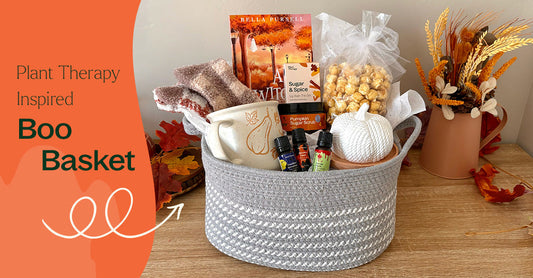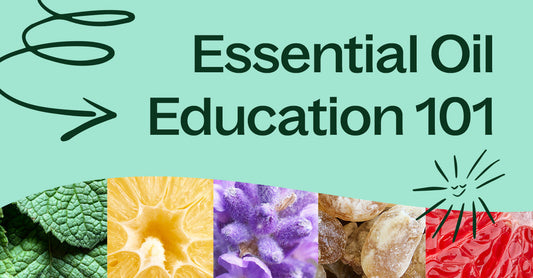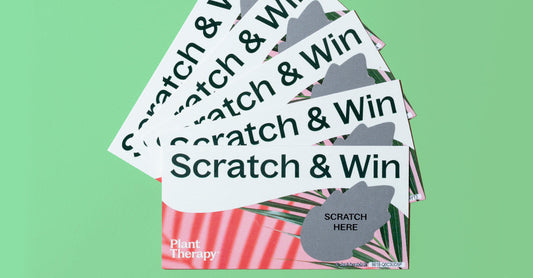You could ask just about anyone what they know about Myrrh, and they could probably give you a couple quick answers. Myrrh was famously presented to baby Jesus in the Bible after all and has prominent mentions throughout religious texts dating back to ancient times. While notoriety-wise, it may take a back seat to its famous relative, Frankincense, Myrrh also has an incredibly rich history that is supported by both textual and archeological evidence. It was consistently used for a wide variety of ailments and at one point in time was considered even more valuable than gold.
Time for a quick history lesson!
Don’t worry—I’ll try to make it brief. But really, Myrrh has a wonderfully complex and fascinating history with plant lore galore. The name “Myrrh” comes a derivation of the Arabic word murr, meaning “bitter.” It played a critical role in the religious and medical practices of Ancient Egyptians and Hebrews as a healing unguent, embalming and incense ingredient, funeral herb, and ceremonial wine . Greek philosopher Hippocrates, who fundamentally changed medical practices during his life in 460-370 BC, was especially enthralled with the properties of Myrrh. He mentions it more than any other plant in his writings.

There are also great myths revolving around the tree. In one, the resin of Myrrh is said to be from the tears of falcon-headed Horus, the Egyptian god of the sky. It also has an origin story coming from Greek mythology’s Princess Myrrha. Beware that this story, like many myths of the age, has strong adult themes.
If you’d like to learn some more about Myrrh’s interesting history, make sure to check out this nice article from History.com.
Fast forward to NOW.
Today, many people around the world still show lots of love to Myrrh. The essential oil comes from a small, thorny tree native to the deserts of Oman, Yemen, Ethiopia, and Somalia . The tree’s resinous gum oozes from cuts or fissures on the bark, then hardens to “tears” that farmers scrape off and send for steam distillation.
So let’s take a look at what you can do with your bottle of Myrrh. Or, if you don’t have this oil, maybe you’ll find yourself suddenly inspired to add it to your collection!
1. Mood & Meditation

Myrrh has a wonderful, gently calming effect on the nervous system. Because of this, it supports issues such as overthinking, worrying, and mental distraction . Myrrh offers peace and inner stillness and is excellent to use alone or in a blend supporting meditation. To ease worry and tension, try diffusing Myrrh. Or, add 2 drops of Myrrh, 4 drops of Palo Santo, 2 drops of Frankincense Carteri, 1 drop of Neroli, and 1 drop of Mandarin to your personal aromatherapy inhaler. This blend will help ease troubled thoughts and support a positive mindset.
Its traditional use as a funeral herb was due to the peace and ability to ease sorrow in the face of grief . Also, some believe it can create a bridge between worlds and is therefore thought to be beneficial for anyone who is experiencing loss .
Myrrh has a very earthy, dry, amber-wood aroma. If that type of aroma isn’t your favorite, consider blending it with other essential oils, such as Bergamot, Frankincense Serrata, Geranium Egyptian, and Cypress.
2. Beautiful Skin

In the past and the present, Myrrh has been relied on to support a wide variety of skin concerns. It has a slight cooling action that helps reduce inflammation on the skin. It can also provide support to uncomfortable issues such as boils and exceptionally dry skin. Its antifungal properties make it great to use on the feet in the face of fungal infections . Add a single drop of both Myrrh and Tea Tree into a carrier oil and rub onto your feet to help keep them protected!
Myrrh is also wonderful for helping mature skin stay nourished and gorgeous. It helps to reduce the appearance of redness, wrinkles, and scars when added to a carrier oil or lotion to 1%.
3. Promotes Oral Health

Traditionally employed to support mouth, gum, and throat infections, Myrrh is still thought to provide benefit to our overall oral health . This is due to its anti-inflammatory and antibacterial properties. You’ll find it commonly listed as an ingredient for natural homemade toothpaste and mouthwashes. When used as a mouth rinse, it helps support healthy gums and freshen your breath. Simply add a couple of drops to two teaspoons of Fractionated Coconut Oil as an effective alternative to alcohol-based mouthwashes.
4. Soothes Inflammation
While we’ve already touched on how Myrrh’s anti-inflammatory properties can help with skin and oral care, that’s not all it’s good for! Sore joints and muscles can become incredibly uncomfortable when swollen or irritated. Myrrh can help. In an ounce of your favorite lotion, blend 6 drops of Black Pepper, 5 drops of Myrrh, 4 drops of German Chamomile, and 3 drops of Marjoram Sweet. Gently rub on your areas of concern to help reduce inflammation, increase circulation, and start feeling better!
Love Myrrh? Don’t forget to spread the word on our awesome Safe Essential Oil Recipes group on Facebook. With thousands of active essential oil enthusiasts, you’re going to love the community and inspiration!
Sources:
Worwood, V. (2016). The Complete Book of Essential Oils and Aromatherapy, 25th Anniversary Edition. Novato, CA: New World Library. Pg. 631.
Harding, J. (2008). The Essential Oils Handbook: All the Oils You Will Ever Need for Health, Vitality and Well-Being. Watkins Publishing. Pgs. 150-151.
Mojay, G. (2005). Aromatherapy for healing the spirit: A guide to restoring emotional and mental balance through essential oils. London: Gaia. Pgs. 98-99.
Purchon, N., & Cantele, L. (2014). The Complete Book of Essential Oils and Aromatherapy, 25th Anniversary Edition. (Novato, CA: New World Library. Pg. 85.









